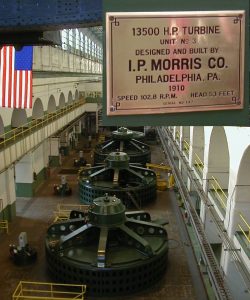Working in a brand new facility is not the prevalent situation. Most of us have to deal with equipment that was designed and built many years ago using technologies we now consider obsolete. However, the simple fact that these machines are still running is a testimony of the hard and successful work that our predecessors were able to achieve. So when dealing with pumping systems that may have been in service for fifty or even a hundred years, we need to maintain them with respect, but also with ingenuity.
There are various achievements of human endeavor that are maintained or restored to their original splendor and function. They could be anything from buildings to automobiles. When doing so, many consider that the goal is to bring these artifacts back to their original condition. In industry, the primary concern is to maintain or improve the functionality of the equipment.
And actually, in many cases, it is not possible to bring them back to their original condition.
For example, some of the materials that were used are no longer available. Gaskets or packing containing asbestos are no longer manufactured. But their replacements turn out, not only to be safer, but also to perform better. Sometimes the equipment must be modified, but most often, it is a simple change over. Knowledge of the material characteristics are essential, as they do not necessarily behave in the same fashion as the original equipment. Training is key to make sure that the upgraded equipment is properly installed and operated.
For mechanical seals, the use of material with better heat dissipating and tribological properties is now common. The fit and form can be maintained, but the function is much improved. Seal face material such as cast iron, bronze or Stellite overlays can be replaced with aluminum oxide, tungsten carbide, or silicon carbide. The lengthening of service life will be considerable. In the same space, a balanced mechanical seal can replace an unbalanced one resulting in lower power consumption, reduced cooling requirements, and longer life.
Another area that has seen major improvements is lubricants. The lubricating oils that are now available have new formulations with better viscosity control and additives that prevent wear of sliding surfaces. It used to be that automobiles would require frequent oil changes due to the rapid deterioration of the oil. With the advent of synthetic oils, the change intervals have been stretched to 15,000 miles and even more. There are many places where this can make a difference. The most obvious area for the improved lubrication is the bearings for pumps, motors, and gearboxes. But there are other services where the benefits can be reaped. Oil barrier fluids in dual sealing systems, for example, have benefited from the thermal stability of the synthetic oil chemistry.
Improved technology is available for motors and control systems. Replacement parts can be provided with refined geometry, improved metal alloys, and manufactured to tighter tolerances. Condition monitoring can keep track of the health of machinery with vibration and proximity sensors, offering protection from major damage.
The picture to the left shows turbines that were commissioned over one hundred years ago (circa 1910). They were designated an Engineering Landmark by the American Society of Mechanical Engineers (ASME) for the initial use of tilting pad bearings. They are still operating today with increased performance and reduced maintenance requirements.
Repairs and maintenance should always be done with the goal of improving performance. Understanding a mode of failure is necessary to prevent its premature re-occurrence. Although machines will wear over time due to usage, the majority of downtime is from the equipment not achieving its intended service life. As technology improves, it can and should be applied to existing machinery. Using the best available materials, methods, and knowledge can make equipment perform even better than originally possible.
Tearing everything down to replace with all new systems should be only the last resort. It is only when machinery is neglected that problems become insurmountable. Upgrading equipment is economically and environmentally less costly than replacing it.
We need to respect the work of those that came before us so we can earn the respect of those that will come after us.






Comments